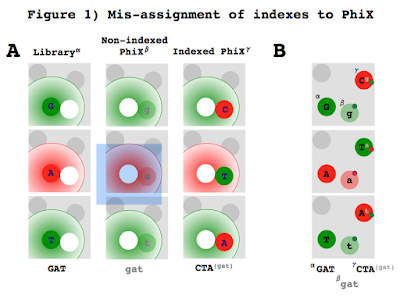Follow this link to Enseqlopedia/coregenomics...
"CoreGenomics is dead...long live CoreGenomics"...the CoreGenomics blog has moved to its new home: http://enseqlopedia.com/coregenomics. Please update your bookmarks and register to follow the new blog, for updates on the NGS map (coming soon), and to access the new Enseqlopedia (coming soon)!
"CoreGenomics is dead...long live CoreGenomics"...the CoreGenomics blog has moved to its new home: http://enseqlopedia.com/coregenomics. Please update your bookmarks and register to follow the new blog, for updates on the NGS map (coming soon), and to access the new Enseqlopedia (coming soon)!
Enseqlopedia: Last year I started the process of building the new Enseqlopedia site, after five years of blogging here on Blogger. Whilst Enseqlopedia is still being developed the CoreGenomics blog has moved over and you can also find all the old content there too. Comenting should be much easier for me to manage so please do give me your feedback directly on the site.
NGS mapped: Currently I'm working on the newest implementation of the Googlemap sequencer map Nick Loman and I put together many years ago. The screenshot of the demo gives you an idea of what's changed. The big differences are a search bar that allows you to select technology providers and/or instruments. The graphics also now give a pie-chart breakdown of the instruments in that location...you can clearly see the dominance of Illumina!
Other technologies that will appear soon will be single-cell systems from the likes of 10X Genomics, Fluidigm, Wafergen, BioRad/Illumina, Dolomite, etc, etc, etc. So users can find people nearby to discuss their experiences with (we're also restarting our beer & pizza nights as a single cell club here in Cambridge so keep an eye out for that on Twitter).
Lastly a change that should also happen in 2017 is the addition of users to the map. I'm hoping to give anyone who uses NGS technologies a way to list their lab, and highlight the techniques they are using. Again the aim is to make it easier for us to find each other and get talking.
Other technologies that will appear soon will be single-cell systems from the likes of 10X Genomics, Fluidigm, Wafergen, BioRad/Illumina, Dolomite, etc, etc, etc. So users can find people nearby to discuss their experiences with (we're also restarting our beer & pizza nights as a single cell club here in Cambridge so keep an eye out for that on Twitter).
Lastly a change that should also happen in 2017 is the addition of users to the map. I'm hoping to give anyone who uses NGS technologies a way to list their lab, and highlight the techniques they are using. Again the aim is to make it easier for us to find each other and get talking.
Enseqlopedia.com is a big step for me. I hope you think it was worthwhile in a year or so. There's one one feature I've not mentioned until now which I'm hoping you'll get to hear more about in the very near future - the Enseqlopedia itself. Watch out for it to appear in press.
Thanks so much for following this blog. I'm sad to leave Blogger. I hope you'll come with me to Enseqlopedia/coregenomics.
Thanks so much for following this blog. I'm sad to leave Blogger. I hope you'll come with me to Enseqlopedia/coregenomics.











